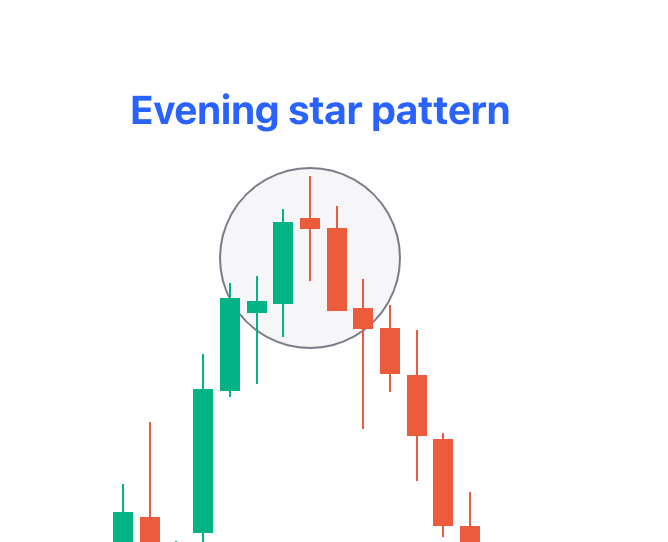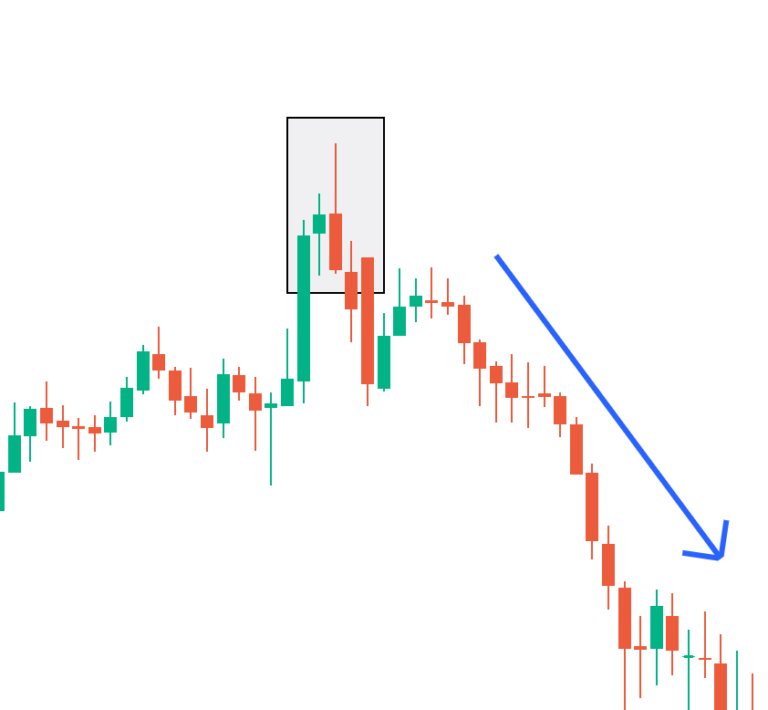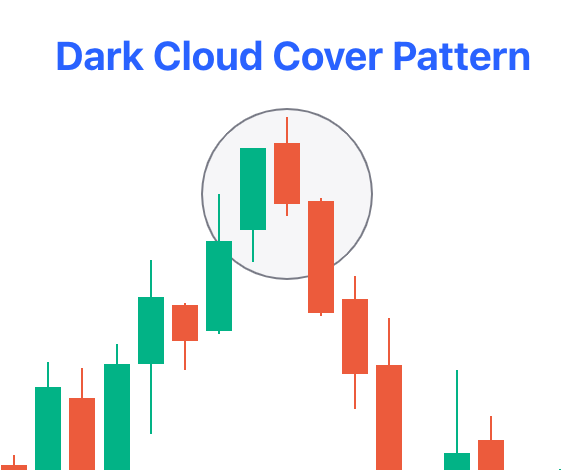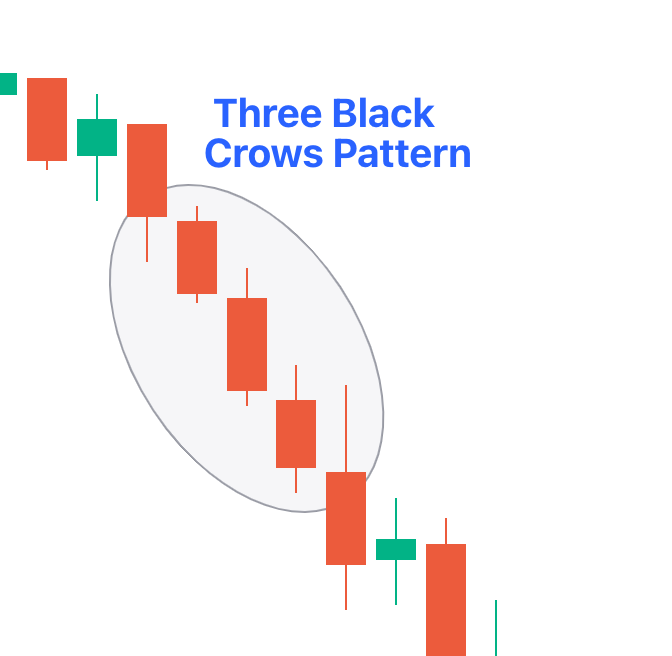
Bearish Candlestick Patterns: Spotting Trend Changes the Easy Way
Have you ever observed the stock chart and wondered if it’s about to fall? Professional traders often use bearish candlestick patterns to identify and spot moments when a price trend might move from up to down. Learning how to identify these patterns can help any trader or investor avoid big mistakes and losses and make safer decisions.
This guide will show one what bearish candlestick patterns are, why they matter, how to recognize them, and the best ways to use them. We’ll also focus on popular types like the bearish engulfing candlestick pattern and explain the most common bearish reversal candlestick patterns with hands-on tips, examples, and FAQs.
What are Candlestick Patterns?
Candlestick patterns are shapes you see on price charts. Each “candle” is a single bar that shows where a price started (open), where it moved (high and low), and where it ended (close) during a fixed time (like one hour or one day). By looking at groups of candles, traders find clues about what might happen next.
Some candlestick patterns suggest prices might go up (bullish patterns), others, like the ones in this blog, signal prices might fall (bearish patterns).
What Are Bearish Candlestick Patterns?
Bearish candlestick patterns form when sellers start to beat buyers, and usually hint that prices could soon drop. They’re especially important after a series of price rises, warning that the rally might be ending.
Key points:
- Bearish patterns help traders spot possible trend reversals from up to down.
- They can act as a signal to sell, to avoid buying, or even to “short sell” (bet on price drops).
Why Do Bearish Patterns Work?
- They reflect changes in buying and selling power.
- Sometimes, they’re the first sign traders see that the “mood” is turning negative.
- The patterns work best near resistance (area where prices have struggled to go higher in the past).
Table: Quick List of Popular Bearish Candlestick Patterns
Pattern Name | What to Look For | What it Signals |
Bearish Engulfing | Big red candle ‘swallows’ a small green one | Sellers overpower buyers sharply |
Evening Star | Three candles: up, pause, then big down | Uptrend may be ending |
Shooting Star | Small body, long top wick, at the trend’s high | Buyers pushed, but sellers took over |
Dark Cloud Cover | Green up candle, then red closes below halfway | Buying runs out of strength |
Hanging Man | Small body at top of uptrend, long lower wick | Buying weakens, possible trend change |
Three Black Crows | Three long red candles in a row | Sellers now control the market |
The Bearish Engulfing Candlestick Pattern
Let’s dive deeper into the most famous bearish pattern.
What is the Bearish Engulfing Pattern?
Happens after prices move up for a while
First candle is green (price up), but small
Second candle is big and red, its body covers the first one completely
Shows sellers suddenly have much more power
Why does this matter?
If you were thinking of buying, this is a warning to stop. If you already own shares, it may be a good time to set a stop-loss or think about selling.
Example
Today, one observes that in Company A’s chart, a small green candle appears, then the following day a bigger red candle forms- engulfing and covering the previous day’s green candle in a complete manner. This is a classic bearish engulfing candlestick pattern, a proper sign that there is a shift in the momentum
How to Recognize Bearish Reversal Candlestick Patterns
Spotting these shapes can feel like learning to recognize weather patterns:
- Look for them after a price rally, not randomly in sideways markets.
- Check for confirmation: A lower close on the next candle confirms the pattern.
- Watch volume: Higher volume makes the pattern more powerful.
- Make sure they appear at key areas, like historical highs or near moving averages.
More Detailed Look at Common Bearish Patterns
1. Evening Star

- First day: Price rises, making a green candle
- Second day: Small body, shows indecision
- Third day: Big red candle, price falls a lot
- Suggests buyers lost strength and sellers took over
2. Shooting Star

- Small body, long upper wick (the “tail” on top) at the chart’s high
- Price tried to jump, but dropped back down by closing time
- Warns of fading buying power
3. Dark Cloud Cover

- First candle: Tall green candle in an uptrend
- Second candle: Opens above previous close, but closes deep into the green candle (often below halfway)
- Suggests mood changed quickly from positive to negative
4. Hanging Man

- Tiny body with a long lower wick at the end of an uptrend
- Looks like a person hanging—shows prices “dipped” but managed to close a bit higher
- Can signal the uptrend is exhausted
5. Three Black Crows

- Three large red candles, each opening inside the last candle’s body, but closing much lower
- A signal that selling pressure is steady and strong, often after a rally
Table: Simple Checklist for Bearish Reversal Candlestick Patterns
Step | What to Check |
|---|---|
1. Where is it? | Pattern after a rally, near resistance |
2. Shape? | Big red candle(s) or clear reversal |
3. Volume? | Volume supports the move |
4. Confirmation? | Next candle follows through bearish |
Using Bearish Candlestick Patterns in Real Trading
Step-by-step guide:
- Wait for the pattern to form at the top of an uptrend.
- Check for higher-than-normal volume to confirm.
- Wait for the next candle—if price keeps falling, the pattern is confirmed.
- Consider selling or avoiding new buys; aggressive traders may even ‘short’ the market.
Extra tip: Use stop-loss orders above the highest price of the reversal pattern, in case the market suddenly reverses back upwards.
Example Scenario
Imagine a tech stock rallies from 100 to 120 in a matter of days. On the chart:
- You notice a small green candle at 120, then a huge red candle the next day closing at 115, completely covering the green candle’s range.
- Volume is higher than usual.
- This is a textbook bearish engulfing candlestick pattern.
A cautious trader may close their buy position here or even look for opportunities to profit on the downside.
Table: Key Bearish Patterns and Their Signals
Pattern | Number of Candles | Ideal Spot | Strength |
Bearish Engulfing | 2 | After a rally | High |
Evening Star | 3 | Uptrend peaks | Very High |
Shooting Star | 1 | At resistance | High |
Dark Cloud Cover | 2 | Up moves | Moderate |
Hanging Man | 1 | Peak of a trend | Moderate |
Three Black Crows | 3 | Overbought surges | Very High |
Tips for Applying Bearish Patterns Safely
- One must never take a trade on just a single pattern rather, one must combine it with support/resistance, moving averages, or RSI for higher and better accuracy.
- Don’t trade every pattern. Patience pays off; the best ones appear after strong moves.
- Always set stop-loss orders to limit risk.
- Use demo accounts to practice spotting and trading with bearish candlestick patterns before risking real money.
The Power and Limitations of Bearish Candlestick Patterns
Advantages
- Easy to spot on most charts
- Works across stocks, forex, crypto, and commodities
- Gives early warnings for trend changes
Limitations
- False signals can happen, especially in choppy markets
- Patterns aren’t magic—use for guidance, not guarantees
- They show a shift in sentiment, but not how far prices will drop
Summary Table: How to Use Bearish Candlestick Patterns
Step | What To Do |
Identify Pattern | Look for shape after a price run up |
Confirm | Check next candle, volume, indicators |
Plan Entry/Exit | Decide where you’ll sell or short |
Set Stop-Loss | Protect your trade above pattern’s top |
Review Outcome | Note wins, losses, learn for next time |
Final Thought
Getting a grip over bearish candlestick patterns is like trying to grasp how to read traffic signals during driving- they help identify when its the right time to slow down or modify directions in their trading journey. Patterns such as bearish engulfing candlestick pattern and other major bearish reversal candlestick patterns can prepare one for any drops that could occur potentially, avoiding costly mistakes.
One must closely monitor these patterns on the price charts, always use other tools for additional confirmation and never ignore the risks involved. Over time, being able to identify these candlestick patterns can change your trading game, keeping decisions informed and steady even when markets fluctuate in a volatile manner.
FAQ'S
What are bearish candlestick patterns and why should I care?
They’re chart shapes that warn buyers are losing control and sellers may push prices lower. Recognizing them early can help mitigate massive losses.
How do I use the bearish engulfing candlestick pattern?
Look for it after a rally. If the second candle is big, red, and fully covers the first, consider selling or not taking new buys. Always one must confirm with the next candle and other indicators.
Which bearish reversal candlestick patterns are most reliable?
The bearish engulfing, evening star, and three black crows are among the most trusted for identifying possible market highs.


